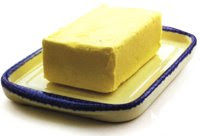

 http://www.icealaska.com/
http://www.icealaska.com/


 http://www.icealaska.com/
http://www.icealaska.com/
 In researching casting water and freezing it into solid forms, I came across an article posted by a contributor to Wired Magazine. Moldrite 25 by Artmolds and Ease Release 200 are the two materials this individual used to make his LEGO ice tray molds. He goes into detail on how easy it was. This process may be an option for testing the ice portion of my project.
In researching casting water and freezing it into solid forms, I came across an article posted by a contributor to Wired Magazine. Moldrite 25 by Artmolds and Ease Release 200 are the two materials this individual used to make his LEGO ice tray molds. He goes into detail on how easy it was. This process may be an option for testing the ice portion of my project.
 The idea for this project is to pick a form and express that form through various materials. As an expectant mother, my mind is constantly on what it will be like to raise a child. From 'will they take to breastfeeding?' to 'will they get a date to the prom?' to 'will they live a long and happy life?' are thoughts I can't seem to shake but will really only discover through experience. This is what brought to my attention the many stages of life and how I might communicate them through material and form. I would like to carve a wax rendition of a baby pacifier (sketches and models to come), to cast out of multiple materials. This form is striking to me. Its clean, simple and strong, and an abstracted version of it will work well with my ideas. A pacifier is one of the first possessions one has. The nipple shape is symbolic of that of mother and her nurturing relationship with child. There are limits to what can be cast so I am choosing materials relative to my ideas I can only imagine will work. I may need advice and practice runs to test them.
The idea for this project is to pick a form and express that form through various materials. As an expectant mother, my mind is constantly on what it will be like to raise a child. From 'will they take to breastfeeding?' to 'will they get a date to the prom?' to 'will they live a long and happy life?' are thoughts I can't seem to shake but will really only discover through experience. This is what brought to my attention the many stages of life and how I might communicate them through material and form. I would like to carve a wax rendition of a baby pacifier (sketches and models to come), to cast out of multiple materials. This form is striking to me. Its clean, simple and strong, and an abstracted version of it will work well with my ideas. A pacifier is one of the first possessions one has. The nipple shape is symbolic of that of mother and her nurturing relationship with child. There are limits to what can be cast so I am choosing materials relative to my ideas I can only imagine will work. I may need advice and practice runs to test them.  Crayons. Playful infant stage. Creative. Colorful. Melted down able to be colored with once cast.
Crayons. Playful infant stage. Creative. Colorful. Melted down able to be colored with once cast. Metal. Teenage years. Cold. Hard. Distant. Frustration. Rebellion.
Metal. Teenage years. Cold. Hard. Distant. Frustration. Rebellion. Rose Petals in Resin. Romantic years. Love. Heartbreak. Joy. Disappointment.
Rose Petals in Resin. Romantic years. Love. Heartbreak. Joy. Disappointment. Ice. Old age. Weathered. Vunerability. Deterioration.
Ice. Old age. Weathered. Vunerability. Deterioration.
 Lemon Peel.
Lemon Peel.

 Investment-'to cloth, cloak or surround (Latin root)
Investment-'to cloth, cloak or surround (Latin root) Sprues
Sprues

 Bullets
Bullets


 Mining Carts
Mining Carts
I like the antiquity to these old mining carts. The first one looks secretive because of the trunk-like shape to it. The various gears and wheels in the second one are nice, just not sure how I would work these into a piece yet.



 Scar Tissue
Scar Tissue


